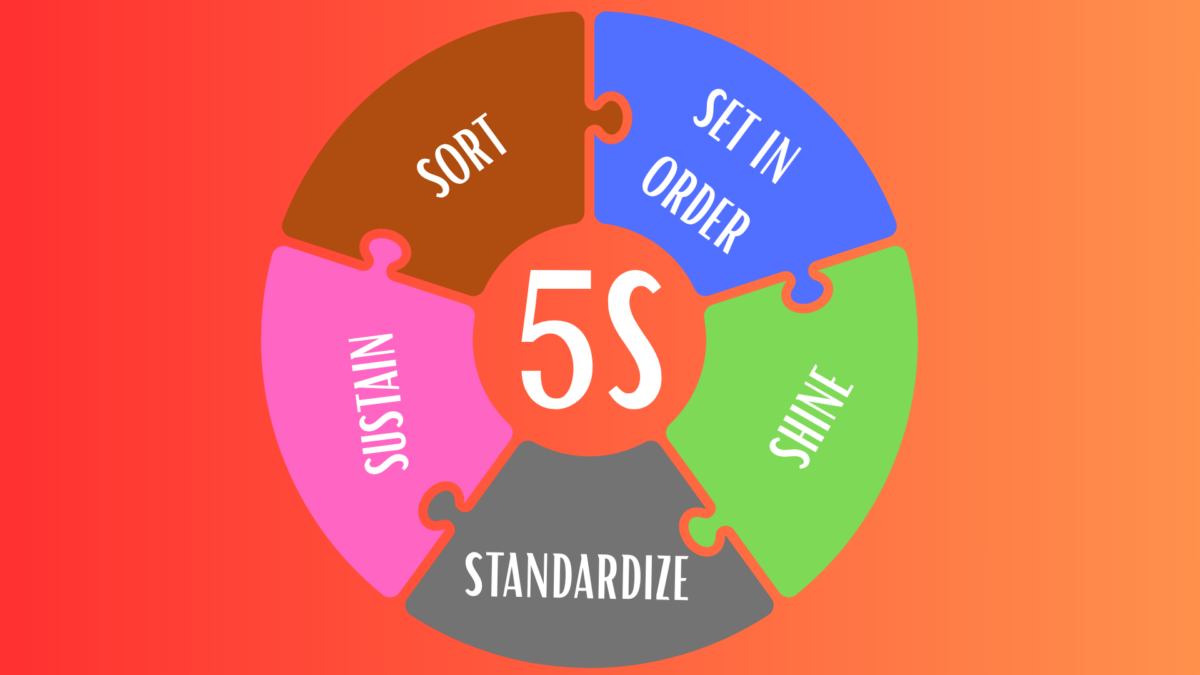Introduction to the 5S System and Its Roots in the Toyota Production System
The 5S system is a cornerstone of lean manufacturing, originally adapted and formalized by the Toyota Motor Company within its manufacturing facilities as part of the Toyota Production System. The 5S system is based on five pillars: Sort, Set in Order, Shine, Standardize, and Sustain. This five-step methodology—Sort, Set in Order, Shine, Standardize, Sustain—creates a visual workplace that empowers teams to identify and eliminate the hidden sources of waste. The term 5S originates from Japanese words that represent each pillar, reflecting Japan’s tradition of orderliness and efficiency. While the 5S methodology was formalized in Japan, Western companies had already adopted similar workplace organization principles before its formalization. By fostering a culture of continuous improvement and worker participation, organizations can effectively implement 5S as a key component of operational excellence.
Transform your work environment with proven 5S principles—enroll in our 5S System Course today!
Sort: Removing Unneeded and Hazardous Materials
The first pillar, Sort, focuses on clearing the work area of unnecessary items and hazardous materials. This step helps reduce waste and eliminate various waste from the process. Teams tag broken tools and unneeded items, ensuring that only frequently used tools and essential materials remain in the workspace. Sorting is necessary for maintaining order in all work areas. This step immediately reduces waste, improves safety, and cuts down on the time workers spend searching for tools, thereby minimizing wasted time.
Set in Order: Organizing Workplaces for Easy Access
Next, Set in Order transforms the workspace into a visual factory. Every tool, component, and supply has a designated spot, marked with clear labels and visual cues, ensuring easy identification. Shadow boards for equipment and colored markings on the shop floor serve as visual controls, helping maintain organization and reduce errors. These practices boost workplace efficiency and improve employee morale. Maintaining a clean workplace is a natural consequence of effective organization.
Ready to master workplace organization? Dive deeper with our 5S System Course.
Shine: Maintaining Clean and Safe Environments
The Shine pillar emphasizes the importance of regular cleaning and inspection. Cleaning supplies are standardized, and teams perform regular audits to spot leaks, wear, or contamination. Regular cleaning leads to enhanced safety by reducing hazards and preventing accidents. This not only keeps the manufacturing floor tidy but also uncovers potential safety issues, such as slippery surfaces or malfunctioning equipment. The Shine step enhances safety by ensuring hazards are quickly identified and addressed, thereby improving patient safety in healthcare settings and shop floor safety in industrial environments. Shine, standardize, and sustain are essential for maintaining a clean and safe environment.
Standardize: Creating Clear Standards and Procedures
After organizing and cleaning, Standardize ensures practices become standardized work. Companies establish cleaning checklists, formal routines for eliminating waste, and visual control boards to ensure efficiency. This creates standards that align teams, drives continuous improvement efforts, and turns ad-hoc activities into a well-organized system.
Build consistency and drive lean outcomes—join our 5S System Course.
Sustain: Fostering Self-Discipline and Cultural Change
The final pillar, Sustain, embeds 5S into the organizational fabric. Through building participation, leadership modelling, and self-discipline, employees maintain the order, shine, and standardize cycle. Periodic regular audits and feedback loops encourage accountability, making 5S a core element of the work environment rather than a one-time initiative. Artificial intelligence tools can further support sustaining 5S by providing real-time monitoring and training, helping organizations maintain standards more efficiently. Additionally, safety is a key element in sustaining long-term improvements, ensuring that workplace organization systems remain effective and foster a strong safety culture.
Continuous Improvement: Embedding 5S in a Culture of Ongoing Excellence
Continuous improvement is at the heart of the 5S methodology, serving as a key component that helps organizations sustain their progress and drive ongoing workplace efficiency. By making continuous improvement a daily habit, companies empower employees to seek out opportunities to eliminate waste and optimize processes actively.
Embedding 5S into the culture means that every employee, from the shop floor to management, is engaged in identifying inefficiencies and suggesting improvements. This commitment to ongoing excellence ensures that the workplace remains organized, clean, and efficient, not just after an initial 5S event, but as a lasting standard.
To create a culture that supports continuous improvement, organizations should encourage open communication, provide regular training, and recognize employee contributions to the workplace. Leadership plays a crucial role in modeling the behaviors that sustain 5S, while regular reviews and feedback loops help maintain momentum. By integrating continuous improvement into daily routines, organizations can ensure that the benefits of 5S—such as reduced waste, improved flow, and higher workplace efficiency—are not only achieved but continually enhanced.
Benefits and Applications Across Industries
The 5S system offers many advantages across industries.
Implementing the 5S system yields:
- Reduced waste and more efficient processes
- Improved productivity through optimized workflows and organized workspaces
- Enhanced operational efficiency on production lines
- Higher employee engagement and well-being
- Faster process flows and shorter lead times
- Stronger quality control and fewer quality issues
From the manufacturing industry and automotive shops to healthcare, logistics, and offices, 5S fosters a productive work environment and drives operational excellence.
Conclusion: Kickstart Your 5S Lean Production Journey
The 5S methodology is more than housekeeping—it’s a holistic workplace organization method that unleashes the power of lean manufacturing practices. By sorting, organizing, cleaning, standardizing, and sustaining, you create a visual workplace that supports continuous improvement, waste reduction, and boosts productivity.
Ready to lead the change?
👉 Enroll now in our 5S System Course and transform your organization’s culture and operations.

